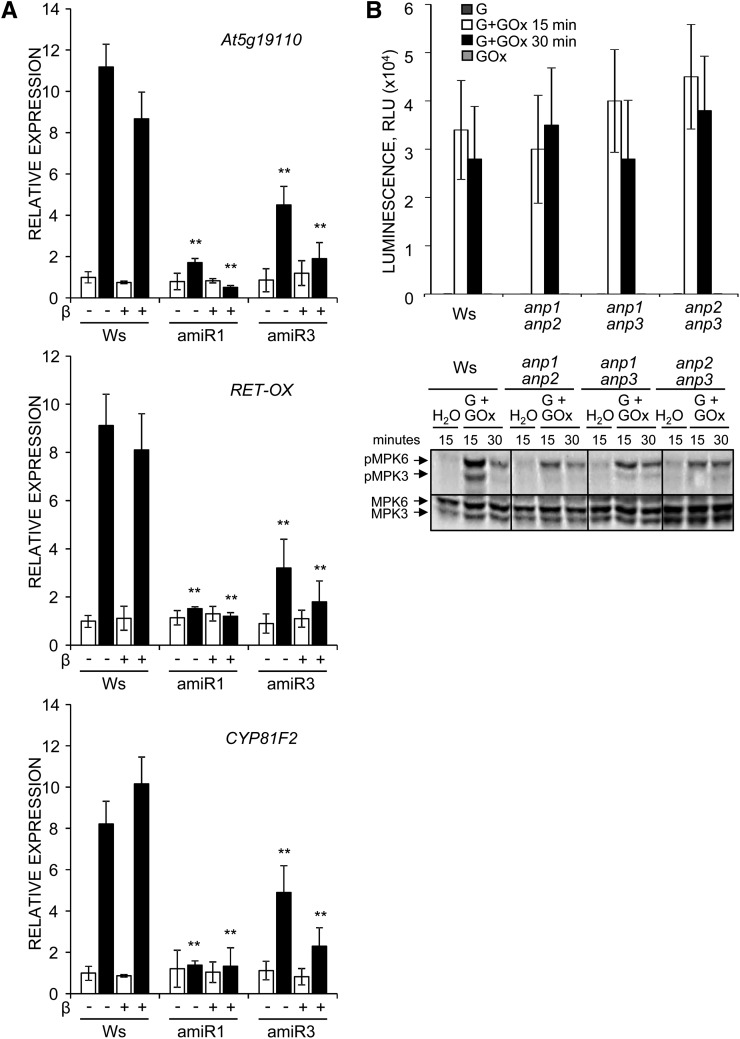Figure 8.
anp mutant seedlings show a defective response to hydrogen peroxide. A, Wild-type (Ws) and anp triple mutant (amiR1 line 2.5 and amiR3 line 5.3) seedlings grown in DMSO alone (beta, –) or β-estradiol (β, +) were treated for 1 h with Glc (0.25 mm, white bars) in the absence or in the presence of Glc oxidase (0.01 units; black bars). Expression of the indicated genes was analyzed by qRT-PCR analysis, normalized to UBQ5 expression, and plotted relative to expression in Ws treated only with Glc and grown in DMSO. Results are the mean of at least three independent experiments (± se; n = 20 in each experiment). Asterisks indicate statistically significant differences between mutant and Ws plants treated in the same way according to Student’s t test (**P < 0.01). B, anp double mutant seedlings were treated for the indicated minutes with Glc (G) in the absence or in the presence of Glc oxidase (GOx). The amount of hydrogen peroxide produced was assessed by a luminol-based assay (top), and MPK3 and MPK6 phosphorylation was determined by immunoblot analysis using an antip44/42-ERK antibody (bottom).

